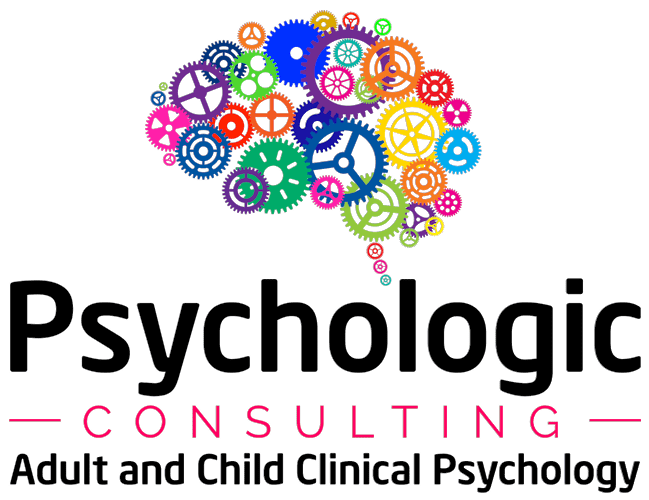Assessment for Attention Deficit Hyperactivity Disorder
Attention-deficit/hyperactivity disorder (ADHD) is a brain disorder marked by an ongoing pattern of inattention and/or hyperactivity-impulsivity that interferes with functioning or development. Attention deficit hyperactivity disorder (ADHD) is a chronic condition that impacts an individual’s emotions, behaviours, and the ability to learn new things. It mainly affects children but can also occur in adults.
The effects of ADHD can vary from person to person. To be diagnosed with ADHD, symptoms must have an impact on your day-to-day life. Here’s what to know about the different types of ADHD plus how they’re diagnosed and treated.
Types of ADHD
ADHD is divided into three main types:
- inattentive type
- hyperactive-impulsive type
- combination presentation type
Each type of ADHD is tied to one or more characteristics. ADHD is characterized by inattention and hyperactive-impulsive behaviour. These behaviours often present in the following ways:
Inattention
getting distracted, having poor concentration and organizational skills. People who experience inattentive behaviour often:
- miss details and are distracted easily
- get bored quickly
- have trouble focusing on a single task
- have difficulty organizing thoughts and learning new information
- lose pencils, papers, or other items needed to complete a task
- don’t seem to listen
- move slowly and appear as if they’re daydreaming
- process information more slowly and less accurately than others
- have trouble following directions
Hyperactivity – Impulsivity
never seeming to slow down, talking and fidgeting, difficulties staying on task. People who are impulsive or hyperactive often:
- squirm, fidget, or feel restless
- interrupt others
- take risks
- have difficulty sitting still
- talk constantly
- touch and play with objects, even when inappropriate to the task at hand
- have trouble engaging in quiet activities
- are constantly “on the go”
- are impatient
- act out of turn and don’t think about consequences of actions
- blurt out answers and inappropriate comments
Children with hyperactive-impulsive type ADHD can be a disruption in the classroom. They can make learning more difficult for themselves and other students. More boys are diagnosed with the hyperactive-impulsive type than girls.
Everyone is different, so it’s common for two people to experience the same symptoms in different ways. For example, these behaviours are often different in boys and girls. Boys may be seen as more hyperactive, and girls may be quietly inattentive.
Combined presentation
If you have the combination type, it means that your symptoms don’t exclusively fall within the inattention or hyperactive-impulsive behaviour. Instead, a combination of symptoms from both of the categories are exhibited.
Most people, with or without ADHD, experience some degree of inattentive or impulsive behaviour. But it’s more severe in people with ADHD. The behaviour occurs more often and interferes with how you function at home, school, work, and in social situations.
Most children have combination type ADHD, according to the National Institute of Mental Health Trusted Source. This type is more common in boys compared to girls.
How is it diagnosed?
There isn’t a simple test that can diagnose ADHD. Children usually display symptoms before the age of 7. ADHD shares symptoms with other disorders and more often than not, ADHD coincides with another disorder. As per a national 2016 parent survey, 6 in 10 children with ADHD had at least one other mental, emotional, or behavioural disorder. The most common co-occurring conditions reported with ADHD include:
- 52% behavioural or conduct problems
- 33% anxiety disorders
- 17% depression
- 14% autism spectrum disorder
- 1% Tourette syndrome
A small percentage (1.0%) of adolescents aged 12 to 17 years with ADHD also had a parent-reported current substance use disorder (SUD). It is therefore important that the diagnosing clinician has a lot of experience and can rule out that the displayed symptoms are not being caused by another mental or medical disorder. It is also not uncommon that when being assessed the diagnosing clinician can also point out any concerns to you about other comorbid conditions.
The process of Assessment for ADHD
- Interview with Parents/caregivers to take a detailed history of the person’s development, physical health, and mental health, and careful consideration of other information such as previous records, prior school reports, and family accounts and presenting concerns – usually 1 to 1.5 hours.
- Parents and a teacher or someone else who knows the child well are asked to complete online clinical diagnostic questionnaires – usually 1 hour.
- Blind observation (i.e., child is not aware the examiner is there to observe them) at the child’s school if it is permitted.
- Intake with the child if they are over 10 years of age – usually 30 minutes to 1 hour.
- Self-report clinical Questionnaire can be completed by child if they are over age 10 years.
- The patient’s cognitive ability can also be tested using an IQ assessment or tests of memory and attention and compare their performance to their peer group
In a thorough assessment of ADHD all of the above aspects (including observation of the individual by the examiner) are considered in the findings of the report. A report documenting the diagnosis can be requested and provided if needed.
